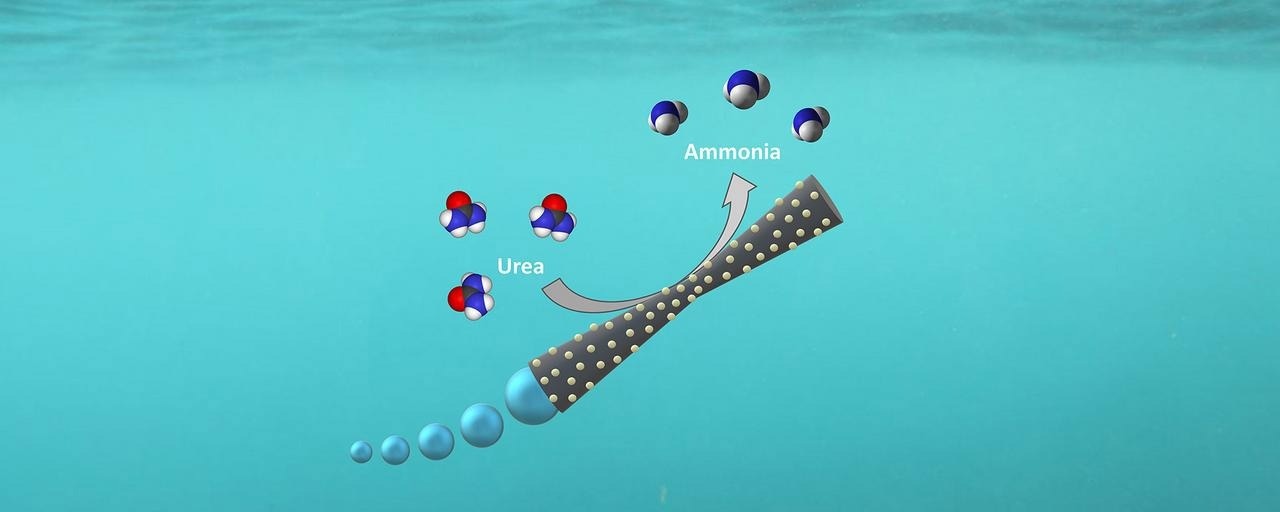Researchers from ICIQ (Institute of Chemical Research of Catalonia) in Spain devised self-propelled micromotors to cleanse wastewater, generating ammonia as a potential green energy source. The University of Gothenburg has crafted an AI technique to optimize these motors for superior performance.

The outside of the micromotor in this study is coated with the chemical compound laccase. This enables the motor to convert the urea in the water into ammonia. Image Credit: Institute of Chemical Research of Catalonia (ICIQ)
Micromotors offer a promising solution for environmental cleanup by autonomously executing precise tasks on a microscale. Composed of silicon and manganese dioxide, these micromotors trigger bubble release through chemical reactions, propelling the tube forward.
Scientists at ICIQ developed a laccase-coated micromotor. This coating speeds up the transformation of urea in contaminated water into ammonia upon interaction with the micromotor.
Green Energy Source
This is an interesting discovery. Today, water treatment plants have trouble breaking down all the urea, which results in eutrophication when the water is released. This is a serious problem in urban areas in particular.
Rebeca Ferrer, PhD Student, Institute of Chemical Research of Catalonia
Rebeca Ferrer works with Doctor Katherine Villa´s group.
The conversion of urea into ammonia presents additional benefits. Extracting ammonia from water not only serves as a method of purification but also provides a potential source of green energy since ammonia can be further converted into hydrogen.
However, considerable development remains, notably in addressing the challenge posed by the bubbles generated by the micromotors, which is a current hurdle for researchers.
We need to optimize the design so that the tubes can purify the water as efficiently as possible. To do this, we need to see how they move and how long they continue working, but this is difficult to see under a microscope because the bubbles obscure the view.
Rebeca Ferrer, PhD Student, Institute of Chemical Research of Catalonia
Much Development Work Remains
The University of Gothenburg's researchers have devised an AI technique capable of predicting the movements of micromotors when observed through a microscope. Through machine learning, multiple motors within the liquid can be concurrently tracked.
If we cannot monitor the micromotor, we cannot develop it. Our AI works well in a laboratory environment, which is where the development work is currently under way.
Harshith Bachimanchi, PhD Student, Department of Physics, University of Gothenburg
Predicting when urban water treatment plants might evolve into energy producers poses a challenge for researchers. Extensive development, particularly with the AI method, is imperative to adapt it for large-scale trials.
“Our goal is to tune the motors to perfection,” Bachimanchi concludes.
Journal Reference
Campos, L., et al. (2023). Bubble-Propelled Micromotors for Ammonia Generation. Nanoscale. doi.org/10.1039/d3nr03804a.
Source: https://www.gu.se/en